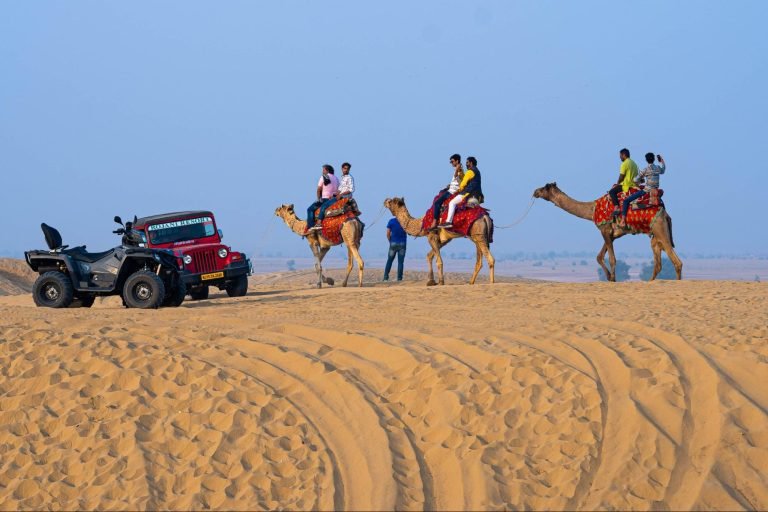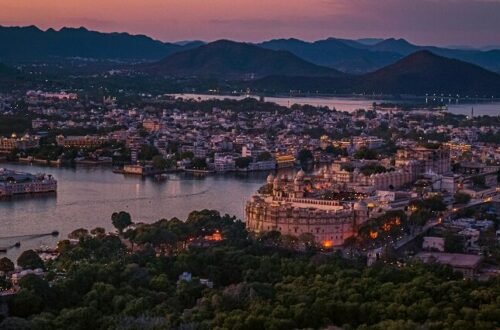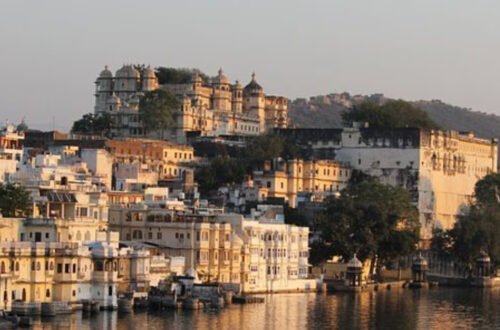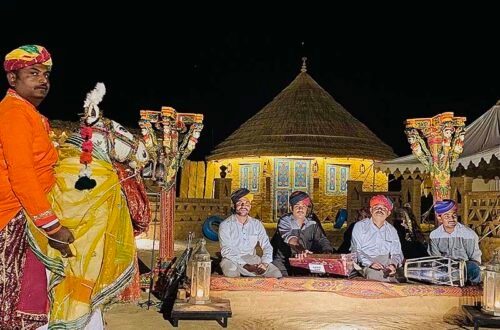Jaisalmer, often referred to as the “Golden City” of India, offers a truly magical experience, particularly during the winter season. As the months from October to March usher in cooler temperatures and a pleasant desert breeze, travelers from across the globe flock to this historic destination to explore its enchanting sand dunes, intricate architecture, and vibrant cultural heritage. One of the most cherished highlights for visitors is staying at traditional Camps in Sam Sand dunes, a unique way to immerse themselves in the desert lifestyle while enjoying comfort and Rajasthani hospitality.
Mild Winter Temperatures Make Exploration Comfortable
Jaisalmer is located in the heart of the Thar Desert, where summer temperatures often soar above 45°C. In stark contrast, winter offers a welcome reprieve, with daytime temperatures ranging between 18°C to 24°C and cooler nights that dip to around 7°C to 10°C. This mild climate makes it ideal for sightseeing, allowing tourists to explore the majestic Jaisalmer Fort, the intricately carved Patwon Ki Haveli, and the mystical Jain Temples without the fatigue or risk of heat exhaustion that summer brings.
Perfect Weather for Desert Camping and Outdoor Experiences
Winter transforms the harsh desert into a welcoming expanse perfect for camping under the stars. The cool evenings and crisp desert air create the perfect setting for open-air dining, folk music, and cultural performances around a bonfire. Desert camps come alive in this season, offering a serene yet festive ambiance that is hard to replicate elsewhere. The clear skies also make stargazing an unforgettable experience, free from pollution or city lights. Whether you choose luxury accommodations or Budget tents in Jaisalmer, the winter setting ensures a comfortable and memorable stay in the dunes.
An Abundance of Cultural Festivals and Events
Jaisalmer’s winter months coincide with several vibrant local festivals that attract thousands of travelers each year. The Desert Festival, held in February, is particularly popular, showcasing Rajasthani folk music, traditional dance, camel races, and unique competitions such as turban-tying and mustache contests. These events offer tourists a glimpse into the deep-rooted traditions of Rajasthan and allow them to participate in the rich cultural life of the desert.
Ideal Conditions for Camel Safaris and Jeep Rides
Tourists visiting Jaisalmer during the winter often indulge in camel safaris across the sun-kissed dunes. A ride during the early morning or just before sunset offers mesmerizing views of the shifting sands bathed in golden hues. Jeep safaris are also popular for those seeking a more adrenaline-filled experience. The cooler weather ensures that these outdoor adventures remain enjoyable throughout the day. Those participating in Jaisalmer Adventure Activities often cite winter as the best time to do so due to the stable weather, cooler temperatures, and lack of dust storms.
Lower Risk of Dehydration and Heat-Related Illnesses
Health and safety are paramount for many travelers, especially those visiting arid regions. Jaisalmer’s summer heat can pose a serious risk of dehydration, sunstroke, and fatigue. In contrast, winter’s cooler climate is not only more comfortable but significantly safer for tourists of all ages. Elderly travelers and families with children find winter the ideal time to visit as it minimizes health concerns and enhances the overall enjoyment of their trip.
Photographers’ Paradise: Winter Light and Scenic Beauty
Photography enthusiasts love winter in Jaisalmer because of the soft golden light that bathes the landscape. The sunrises and sunsets during this season are particularly striking, casting long shadows and highlighting the textures of the sand dunes and architectural marvels. The crisp air and clear skies also contribute to higher visibility, making it easier to capture vibrant, high-contrast images that truly reflect the desert’s natural beauty.
Eco-Friendly Travel and Sustainable Tourism
Another reason tourists prefer winter is the potential for more sustainable and eco-conscious travel. Since the climate is pleasant, there is less dependence on energy-consuming air conditioning, especially in camps and tents. Many eco-camps promote sustainable practices such as solar lighting, biodegradable materials, and water conservation—initiatives that are easier to appreciate and participate in when the climate is accommodating.
Increased Accessibility and Comfort for International Travelers
For international tourists, winter aligns well with holiday seasons, making it a preferred time to visit India. With improved flight connectivity and more comfortable weather conditions, foreign travelers can easily access Jaisalmer via Jaipur or Jodhpur and enjoy a hassle-free vacation. Tour operators also schedule most of their group tours and desert experiences during these months to cater to the surge in demand, ensuring better services and more structured itineraries.
Conclusion: Winter Brings Out the Best in Jaisalmer
From health and comfort to cultural immersion and thrilling adventures, winter undeniably brings out the best of Jaisalmer. The desert’s raw beauty becomes more accessible and enjoyable in this season, with nature and heritage blending seamlessly into an unforgettable experience. Whether you’re seeking solitude amidst the dunes or excitement in cultural festivities, Jaisalmer’s winter climate offers the perfect backdrop for your journey.





